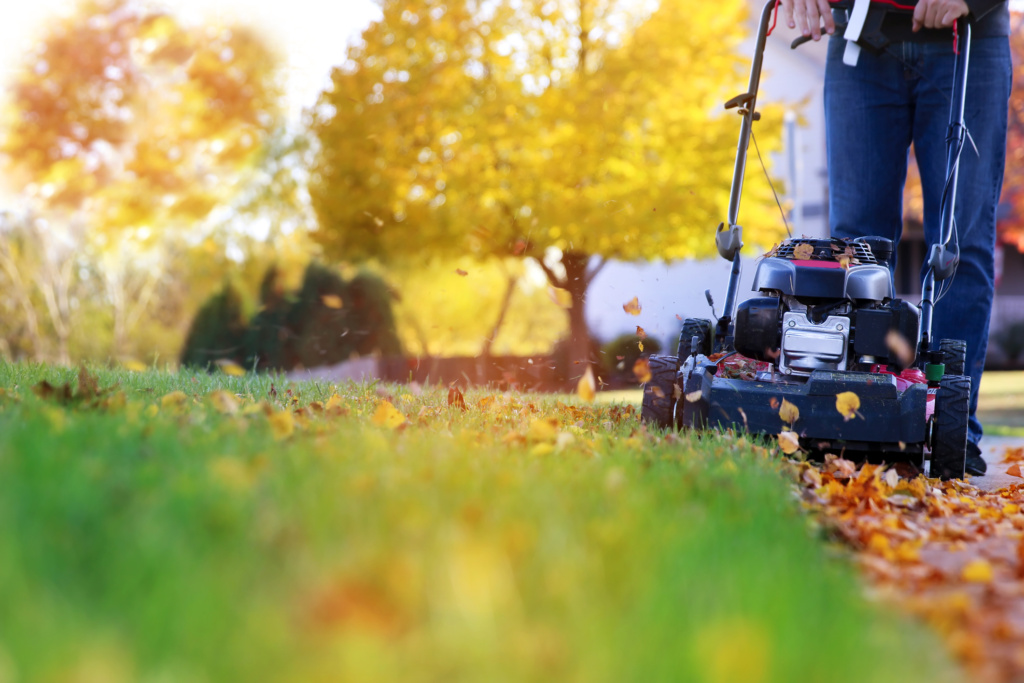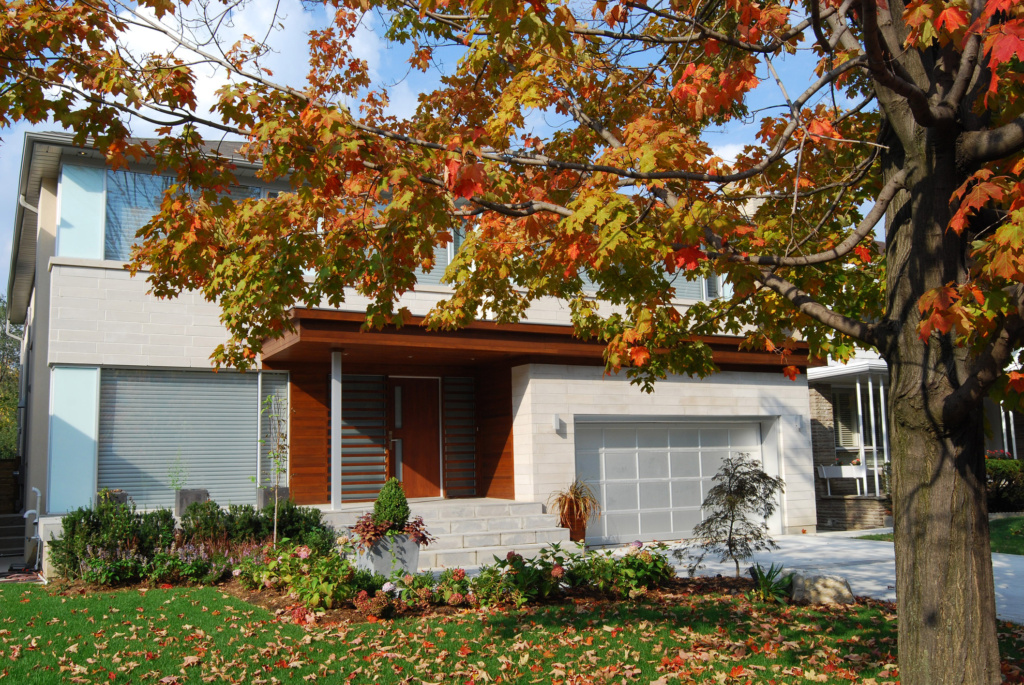Article written by Sarah Hopkins
We are quickly approaching many people’s favorite time of year. It’s not too hot and not too cold, there’s a holiday all about eating candy and a second holiday all about eating way too much dinner, and it’s when the leaves make their colorful transition.
But if you have a house and a lawn, you might be dreading the time of year when the leaves start to fall. Landscaping fall cleanup can be a chore but it is necessary to maintain both the beauty and safety of your property.
What should you be doing to prepare your lawn and garden for winter? Here are a few landscaping tips.
Leaf Cleanup
Ideally, you should clean up fallen leaves once a week. Too many leaves can damage your lawn, because deep leaf cover blocks the grass from getting sun. Some people don’t have time to do leaf cleanup every week, but try to do it on a regular basis. Don’t leave it all for one big job at the end of the season – that’s too much for anybody to handle, and your lawn will look pretty scraggly by the time you uncover it.
One of the easiest ways to deal with fallen leaves is by using a mulching mower. A mulching mower will break down leaves and filter them back into the lawn. Chopped up leaves make a tasty mulch snack for the grass. This method works best for yards that only have a slight leaf cover – too many trees and leaves will probably require you to go over your lawn a few more times with the mower. If you want you can collect your leaf scraps into a lawnmower bag and use them as nutritious mulch for other parts of your garden.
If you’d like to use a leaf blower, just be sure to do it on a dry day. Wet leaves make the task much more difficult, since they stick to the ground and to each other.
The easiest way to collect your leaves is to rake them onto a leaf tarp or drop cloth.

You can drag the tarp along with you as you build up your pile, then you can deposit your collected leaves as you see fit (or as your town sees fit). It’s much easier than having to deal with a bunch of loose piles all over your yard. Even if you have to use a leaf bag, the tarp can make for an excellent funnel (with the help of another pair of hands to hold the bag). It makes the whole process a lot easier.
A wide rake that doesn’t snag on too many leaves can also make the task go a lot faster. Get rid of your raggedy old rake and go get yourself a nice, big one.
Another important part of leaf cleanup is clearing fallen leaves from your home’s gutters. Clogged gutters could contribute to ice damming in the winter, one of the most common winter insurance claims. Caused by snow melting on a warm roof, ice damming occurs when water runs down and freezes at the eaves. As the dams melt, they can leave water pools that can seep into your home and cause water damage. Clean gutters won’t eliminate the possibility of ice damming, but it will certainly decrease it.
Lawn Care
Fall is a great time to give your lawn some extra love and care, since it’s probably facing some rough winter months ahead.
This is a good time to aerate your lawn. Aerating is almost impossible to do once the ground is frozen, so you should take care of it while you’re doing landscaping fall cleanup.
An aerator is a tool that plunges out “plugs” of soil and pulls them out of the lawn, creating small holes. This helps to loosen soil that has become too densely packed, and it gives the roots some breathing room to access water, air and other important nutrients. Don’t worry about picking the plugs up – they will break down on their own and return their own nutrients to the lawn.
The easiest way to aerate is to do it when the soil is moist and it’s easy to pull the plugs out. Even though the soil is already wet, you should thoroughly water the lawn after you aerate it.
This is also the perfect time of year to fertilize your lawn and garden (which you can even do with some of the leaves you mulched earlier).

Just make sure you apply your fertilizer about two or three weeks before the ground freezes. That’s when it can have the most impact, strengthening root and blade growth. After you apply fertilizer, water your lawn so that the fertilizer sloughs off the blades of grass and goes into the soil.
Trees & Branches
Leaves aren’t the only things that can fall down. In fall, you’ll have a better view of the trees and branches near your house, and you’ll be able to tell which limbs are diseased or dying. Although you can plan which limbs to prune throughout fall, it’s better to wait until very late in the season. Limbs that are pruned too early in fall could become diseased or even spur regrowth.
But why prune your trees? Pruning can excise dying and diseased branches, it’s true, but it can also make your tree stronger and more attractive. It will also let more light onto your yard and into your house, which you’ll need as the daylight hours get shorter.
Dead and diseased branches that can fall create an insurance risk. If they just fall onto your lawn, that’s no big deal. But if they fall on your house, a car or walking pedestrian, that can be a big problem. Pruning also reduces the amount of branches that could fall during a heavy storm.
If your branches require a ladder to reach, or if you are inexperienced with sharp tools, calling a landscaper or arborist to groom your trees is the safest option.


